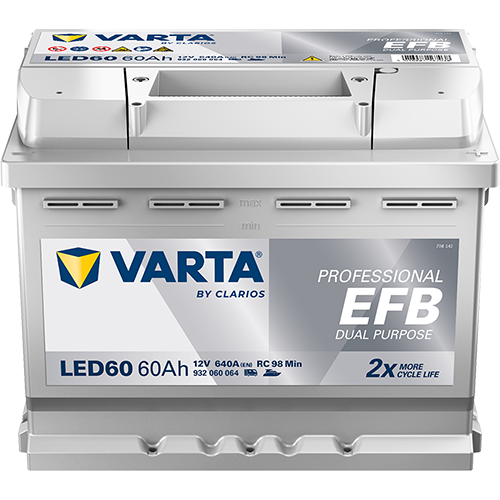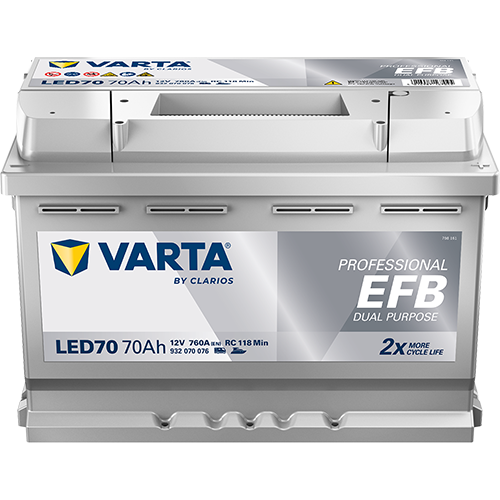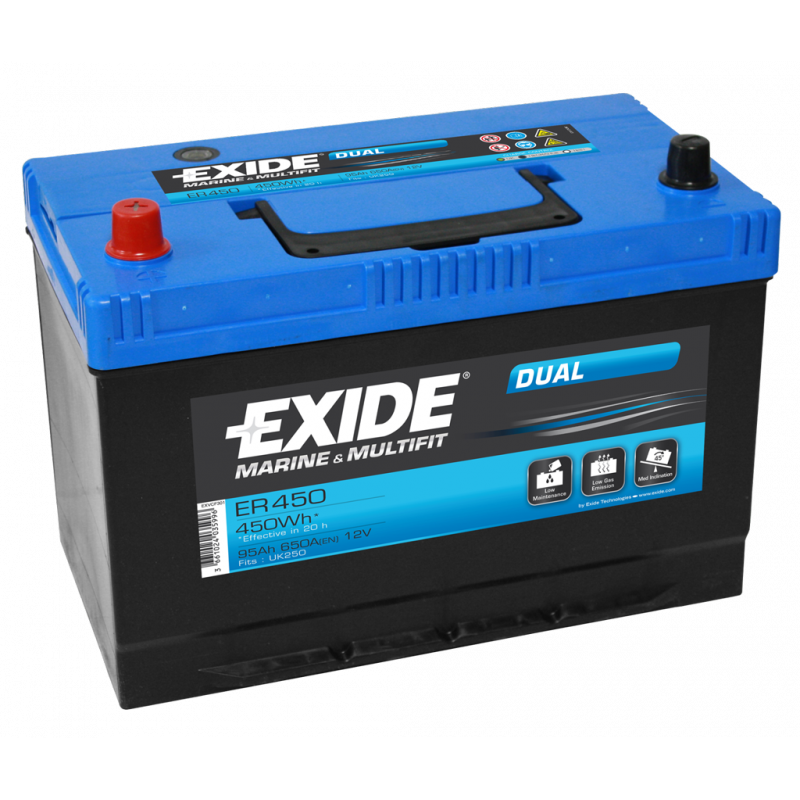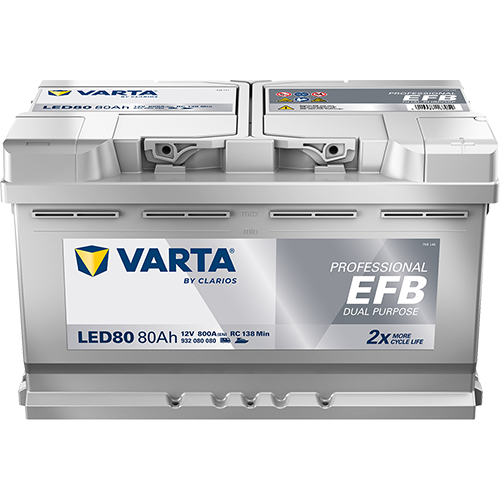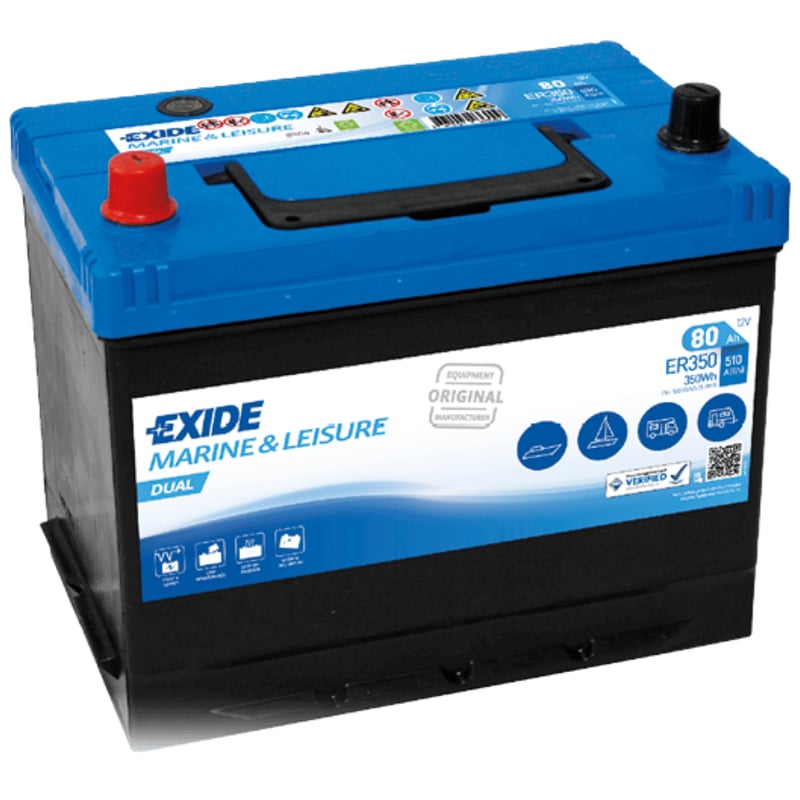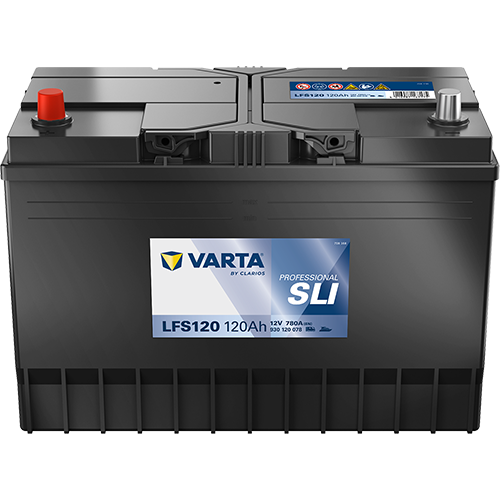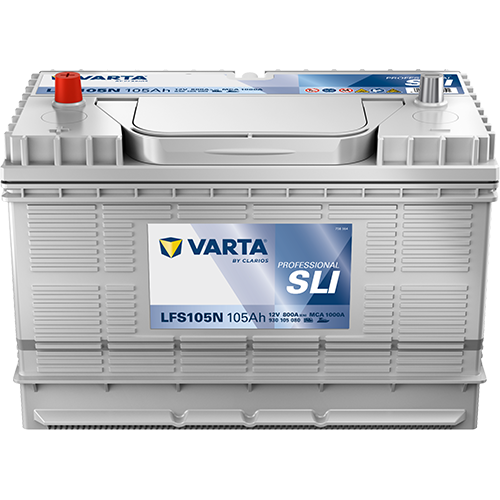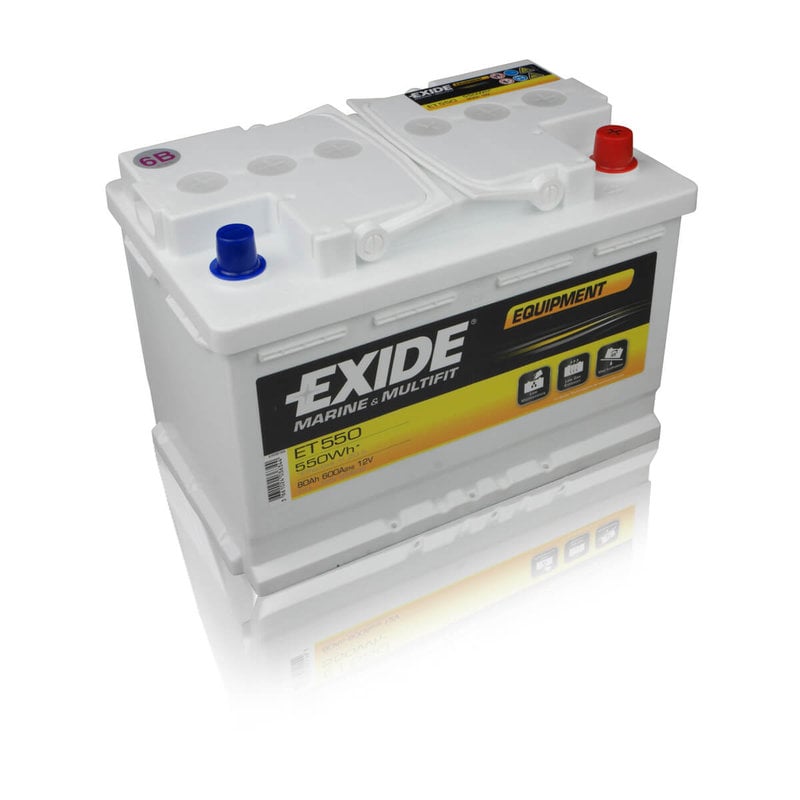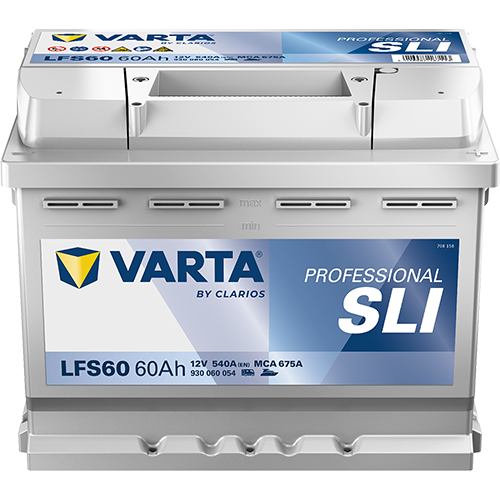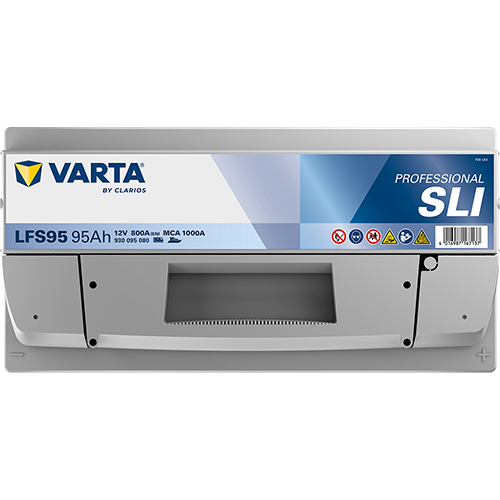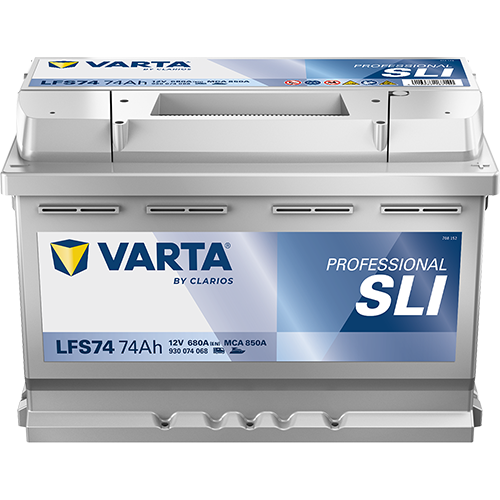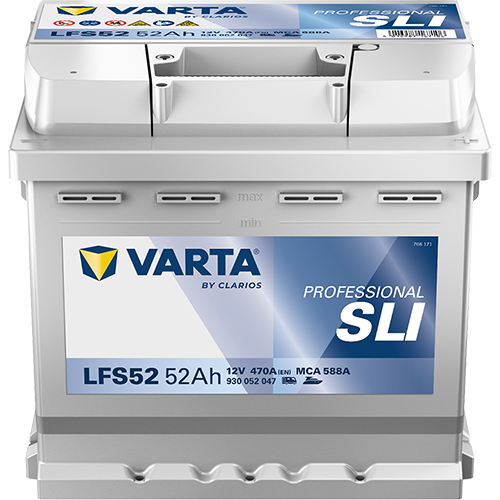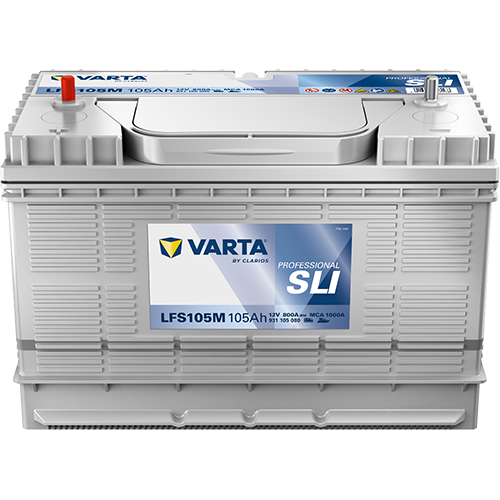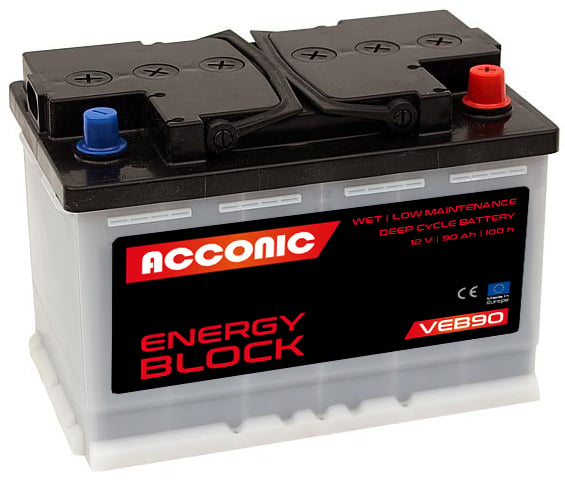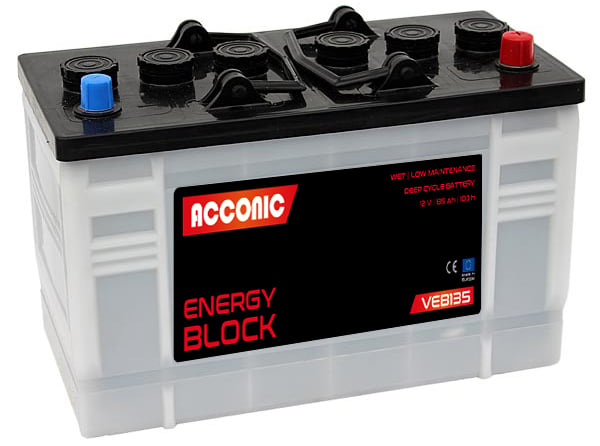Lead-acid batteries
Abbreviations: Lead batteries, Pb batteries Lead-acid batteries have the largest share of the global battery market at around 90 percent. A total of 478.09 GWh were in demand in 2014. And analysts assume that global demand will continue to rise - by around two to three percent annually.1,2 The lead-acid battery is one of the oldest secondary battery systems in existence. It has been known since the middle of the 19th century.
Structure
In lead-acid batteries, a distinction is made between so-called large-surface, grid or armor plates for the anodes, whose surfaces are designed in such a way that they can carry as much lead dioxide (chemical formula PbO2) as possible. Box plates or grid plates are used as cathodes, in whose meshes the lead can be deposited. Lead-calcium-tin alloys are used for low-maintenance lead-acid batteries. As lead would be produced in an almost smooth form with little active surface during charging on the cathode plate due to the almost complete lack of porosity, so-called expanders are added to the active mass. These are organic and/or inorganic molecules such as lignin, carbon black or barium sulphate, which adsorb on the lead surface and ensure suitable porosity and stabilization during cyclization. To avoid short circuits, so-called separators must be installed between the plates, which today consist of special microporous plastic separators.
Types of construction
There are two main types of construction:
- Open cells: This type is filled with diluted sulphuric acid. It is closed with a plug that can be opened to add water regularly. These batteries may only be operated upright, otherwise corrosive acid could leak out.
- Sealed cells (maintenance-free cells): These cells contain a pressure relief valve that can withstand increased operating pressures and cannot be opened. The electrolyte is either contained in a gel cushion (lead-gel battery) or in a fleece (AGM battery). Lead-acid batteries with fleece technology now occupy the more important market position.
Chemical reaction
In a lead-acid battery in its most common form, lead and lead dioxide react with sulphuric acid to form lead sulphate when it is discharged. Redox reaction in a lead-acid battery During discharge, tetravalent lead (from lead dioxide) is converted into bivalent lead at the anode, while lead is converted into bivalent lead ions at the cathode. The discharge process is only possible because the lead is prevented from dissolving in the acid by the occurrence of an overvoltage, as would be expected from its negative standard potential. For this reason, only very pure lead can be used as an electrode material.
Properties
Long service lives are possible for lead-acid batteries, especially in trickle-charge operation. However, the electrodes wear out over time. This can be remedied by so-called lead-gel batteries, in which the diluted sulphuric acid is bound in a viscous gel. However, the typical signs of ageing cannot be completely avoided in this way, meaning that lead-gel batteries only have a slightly longer service life of around 15 years than lead-acid batteries. The wear and tear in lithium-ion batteries is considerably less, which is why these battery types also have a significantly longer service life.
Advantages
- High cell voltage of around 2 V
- Can deliver high currents in a very short time, which is why lead-acid batteries are often used as starter batteries in cars
- High level of safety even if used incorrectly
- No memory effect, so can be recharged again and again regardless of the state of discharge
- Very robust, cost-effective battery type with low maintenance costs
- Technology has been in use for a very long time. It is therefore possible to plan quite precisely how much electricity can be stored and at what cost. There are no such long reference periods for young technologies such as lithium-ion batteries.
- Easy to recycle
Disadvantages
- Low energy density: lead-acid batteries are around four times heavier and significantly larger than lithium-ion batteries with the same capacity
- Relatively fast self-discharge: depending on the battery type and age, this can be up to 30 percent per month at temperatures of 20 °C. This effect increases as the temperature rises. The monthly self-discharge rate for open lead-acid batteries is around 5 to 10 percent and for gel batteries around 3 to 5 percent.
- Poor shelf life: Lead-acid batteries are not well suited for storage - at least not without constant maintenance and regular recharging. Above all, they must not be stored discharged for long periods, otherwise chemical reactions will take place inside, which will permanently destroy the batteries.
- They must be stored in rooms with good ventilation, as small amounts of gas are produced during charging, which can collect and explode in enclosed spaces and contain the toxic and environmentally harmful heavy metal lead. However, recycling is possible to a very large extent and is well organized.
Applications
The most important application markets for lead-acid batteries are
- Starter batteries (cars and motorcycles)
- Traction batteries (e-bikes and e-tricycles, low-speed electric vehicles such as forklift trucks, automatic transfer vehicles, special electric vehicles), whereby lead-acid batteries are (or will be) increasingly competing with lithium-ion batteries in these areas
- Uninterruptible power supply in telecommunications and other areas
Recycling
Heavy metals such as lead can have harmful effects on humans, animals and plants and can accumulate in the food chain and the environment. If they enter bodies of water and accumulate in fish, for example, the heavy metals can enter the human body indirectly via the food chain. Lead can have a damaging effect on various organs and the central nervous system. It is deposited in the bones and can disrupt biochemical processes in the body. It is also highly toxic to aquatic organisms.
Lead may be used in batteries. If they contain more than 0.004% lead by weight, they must be marked with the symbol "Pb" (Latin plumbum "lead") so that consumers can recognize them as containing heavy metals. In addition, lead-acid batteries are always marked with the crossed-out wheelie garbage can symbol, which indicates that they must not be thrown away with household waste but must be disposed of.
Depending on the recycling process, more or less of the contents are recycled. In any case, the lead is recycled and can be reused in battery production. The batteries can be recycled directly in a smelting furnace, as is done with many vehicle batteries and small lead batteries. The majority of lead production in the EU is now covered by recycling - primarily from batteries. In other processes, the majority of the remaining materials can also be recycled, i.e. polypropylene, sulphuric acid, sulphates and other plastic fractions. The efficiencies of the recycling processes for used batteries were calculated for the first time in 2014 in accordance with the methodology of the Recycling Efficiency Regulation (EU) 493/2012. In 2016, the value determined for the recycling processes for lead-acid batteries was 84.7% on average. The efficiency of a recycling process is calculated by comparing the mass of secondary raw materials recovered with the mass of used batteries that were fed into this process.
Special feature of "vehicle batteries": In contrast to portable batteries, there is a deposit obligation for vehicle batteries (starter batteries). In order to return as many lead-containing batteries as possible, a deposit is payable (7.50 euros) if no old battery is returned with a new purchase.










